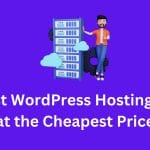When starting an e-commerce business, one of the most important decisions you'll make is choosing the right product sourcing model. Among the most popular options are Dropshipping, White Labelling, and Manufacturing. Each model offers unique advantages and challenges depending on your business goals, budget, expertise, and risk tolerance.
Table of Contents
In this article, we’ll break down the differences between dropshipping, white labelling, and Manufacturing, and help you decide which is the best fit for your e-commerce journey.
1. Dropshipping vs White Labelling vs Manufacturing: Choosing the Right E-Commerce Model.
a. Dropshipping
Definition:
Dropshipping is a retail fulfilment method where the seller does not keep products in stock. Instead, the seller transfers customer orders to a third-party supplier, who then ships the product directly to the customer.
How It Works:
- You set up an online store.
- A customer places an order.
- You forward the order to your supplier.
- The supplier ships the product to the customer on your behalf.
Pros:
- Low startup cost (no inventory needed)
- Easy to launch and scale
- Minimal risk
Cons:
- Lower profit margins
- Less control over product quality and shipping times
- High competition (many sell the same products)
b. White Labelling
Definition:
White labelling involves selling generic products under your brand. You buy products from a manufacturer and add your brand name, logo, and packaging to make them appear unique.
How It Works:
- Source generic products from a manufacturer or supplier.
- Customize the branding and packaging.
- Sell the product as your own through your store or retail partners.
Pros:
- Builds brand identity
- Better profit margins than dropshipping
- More control over packaging and marketing
Cons:
- Requires upfront investment in inventory and branding
- Less flexibility to pivot quickly
- Limited product customization (only branding, not formulation)
c. Manufacturing
Definition:
Manufacturing involves designing and producing a product from scratch. This model gives complete control over product development, materials, design, and branding.
How It Works:
- You develop a custom product idea.
- Find a manufacturer to produce your product.
- Handle inventory, storage, and logistics (or use fulfilment services).
Pros:
- Complete control over the product
- High potential for profit and brand loyalty
- Unique products with less competition
Cons:
- High initial investment
- Longer time to market
- Requires deep knowledge of production, supply chain, and compliance
2. Comparing the Models Side-by-Side.
| Feature | Dropshipping | White Labelling | Manufacturing |
|---|---|---|---|
| Startup Cost | Low | Medium | High |
| Risk Level | Low | Medium | High |
| Profit Margin | Low | Medium | High |
| Time to Launch | Fast | Moderate | Long |
| Product Control | Low | Medium | Full |
| Brand Building | Weak | Strong | Very Strong |
| Scalability | High | Moderate | High (but complex) |
| Customer Experience Control | Low | Moderate | High |
3. Which Model Should You Choose?
The best model depends on several factors, including your budget, goals, timeline, and risk appetite. Let’s evaluate which suits different types of entrepreneurs.
a. Choose Dropshipping If:
- You’re just starting with limited capital.
- You want to test product ideas with minimal risk.
- You prefer not to manage inventory or logistics.
- You're OK with lower profit margins in exchange for lower risk.
Ideal For:
Beginners, side-hustlers, or people exploring online business with minimal investment.
Example:
Selling trending gadgets or pet accessories via platforms like Shopify + AliExpress.
b. Choose White Labelling. If:
- You want to build a long-term brand.
- You have some budget to invest in inventory and branding.
- You prefer moderate control over product quality and packaging.
- You want to differentiate from standard dropshippers.
Ideal For:
Entrepreneurs focused on building a recognisable brand without developing products from scratch.
Example:
Selling organic skincare products with your brand label sourced from a private-label manufacturer.
c. Choose Manufacturing If:
- You have a unique product idea and want complete control over it.
- You're prepared to invest significant capital and time.
- You're focused on innovation and creating a high-value brand.
- You have access to good suppliers and logistics partners.
Ideal For:
Experienced entrepreneurs, startups with investment backing, or inventors with a vision for a unique product.
Example:
Designing and producing a patented fitness accessory or sustainable clothing line.
4. Transitioning Between Models
Many successful businesses evolve from one model to another. For example:
- Start with dropshipping to test market demand.
- Move to white labelling once a winning product is identified.
- Eventually, manufacture your version of the product for complete control.
This progressive model helps manage risk while building brand equity and improving margins.
5. Practical Questions to Ask Yourself
To choose the best sourcing model, ask:
- What is my startup budget?
- How much time do I have to launch?
- Am I focused on generating quick cash flow or building a long-term brand?
- Can I handle logistics, or do I prefer automation?
- How much product control do I want?
Answering these questions will help clarify your next move.
6. Conclusion
There’s no one-size-fits-all answer when choosing between dropshipping, white labelling, or Manufacturing. Each model has its strengths and trade-offs. The key is to align the sourcing strategy with your goals, resources, and long-term vision.
Quick Summary:
- Low budget, low risk? Start with Dropshipping.
- Want branding and better margins? Try White Labelling.
- Have a unique idea and budget? Go for Manufacturing.
Start smart. Grow strong. Pivot when needed.







